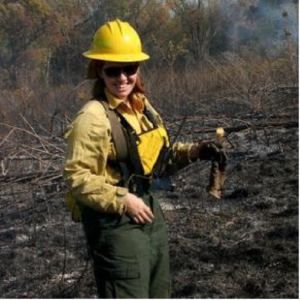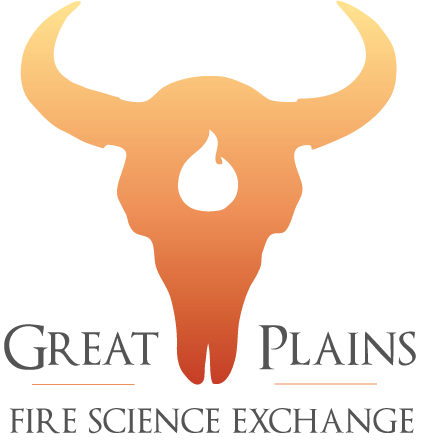Robin Verble-Pearson
GPE: What fire ecology topics related to grasslands get you most excited as a researcher, and why?
This is a tough question—there are a lot of things that get me excited. I have focused primarily on how fire affects the fauna in grasslands to date. My lab has been exploring fire effects on Texas horned lizards, harvester ants, other insect species, and most recently, bobwhite quail. However, topics such as seasonal fluctuations in flammability, small-scale heterogeneity in fire severity, heat tolerance, and fire history are of interest to me.
In particular, I am interested in how small differences in heat tolerance among species shapes post-fire insect communities. Grassland fires don’t always heat the soil to lethal temperatures, so even small differences in heat tolerance can make big differences in survival. I am also interested in understanding how patchy mosaics of fire shape insect communities on the 1m^2 scale.
GPE: What long term goals do you have for your research lab?
In the future, I hope to explore some of the topics I mentioned above in-depth. I also hope to continue my work on fire and insects. However, one of the most exciting parts of having a university lab is that I get to mentor students; my biggest long-term goal is to create and foster a research environment where students can ask exciting questions and become the future of fire ecology.
I am passionate about teaching and training future fire practitioners, and Texas Tech’s undergraduate Natural Resources Management majors are passionate about fire use and excited to learn how to safely and effectively apply fire to the landscape. One of my biggest long-term goals is to build a TTU prescribed burning training program, where our students can gain fire exposure and experience and be competitive for fire management positions across the region.
GPE: What are the most important questions we need to answer for grasslands today?
How do we conserve grassland function and integrity in a rapidly developing world and changing climate?
I think there are three very intertwined topics that are going to be important going forward: 1) fire mitigation and suppression, 2) climate change, and 3) fire management and use. For all three of these topics, education of practitioners, landowners, and other stakeholders is an important component of bringing about change.
GPE: Can you describe one or two findings from your research career related to grasslands and fire?
We recently completed a study led by Rachel Granberg that examined the effects of fire on Texas horned lizards in central Texas grasslands. She found that lizards tended to use burned areas more frequently. She also modeled survival of lizards and found that female lizard survival depends primarily on a lack of leaf litter, as created by fire. My lab also recently completed a project led by Anna Meyer that examined the effects of fire on harvester ant colony size, abundance, and calorie content. Harvester ants are prey items of the Texas horned lizard, so their availability and nutritional content are relevant to its conservation. We found no effect of fire on colony size or abundance; however, ants from burned areas contained fewer calories than ants from unburned areas. While ants from burned areas may be less nutritious, burning is still an important tool in horned lizard conservation.
GPE: What advice can you offer to students considering fire research as a career? What key things should they do to prepare?
My advice would be to go out and experience fire. Take a summer to work on a crew or get involved in prescribed burning. No amount of reading or research can make up for that experience.

